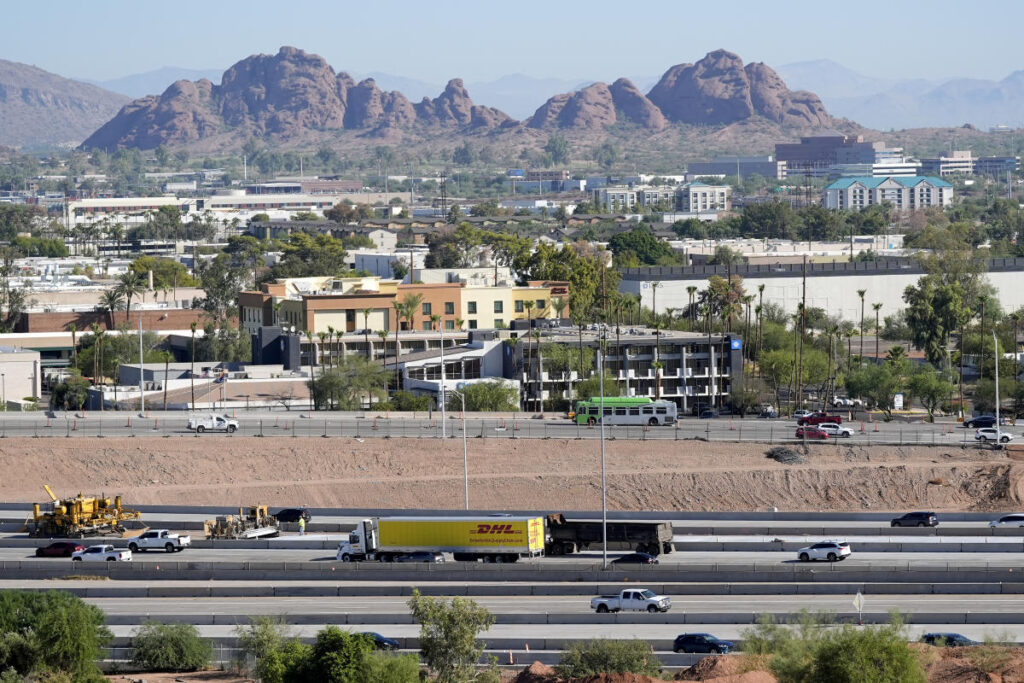Maricopa County, Arizona, has emerged as the nation’s ultimate swing county, playing a pivotal role in the upcoming presidential election between Democrat Kamala Harris and Republican Donald Trump, as well as in determining the balance of power in the U.S. Senate. With its highly contested political landscape, the county has drawn national attention as it can take more than a week, and sometimes up to 13 days, to finalize election results. This extended counting process has fostered an environment rife with conspiracy theories about election integrity. The delays are attributed to several factors, mainly the county’s sheer size, rapid population growth, and its current political demographic, which now showcases a significant segment of Democratic-leaning voters.
Maricopa County stretches over 9,000 square miles and boasts a population of 4.5 million residents, constituting roughly 60% of Arizona’s electorate. Historically, the county was predominantly Republican until demographic shifts began in the late 20th century, influenced by an influx of middle-class residents relocating from colder climates in search of affordable housing and better weather. In 1993, the county’s population was around 2.3 million, dominated by Republican politics. However, the political landscape began to change as individuals from various backgrounds moved in, leading to a more diverse and politically varied community, culminating in a predominantly Democratic representation with a Democratic governor and both U.S. senators.
The transformation from a Republican stronghold to a swing county can be largely attributed to demographic changes, particularly increases in the Latino population. In the 1990s, the tightening of borders in California drove many undocumented immigrants to Arizona, leading to heightened tensions surrounding immigration policy. The passage of the controversial SB1070 law in 2010, which mandated police officers to question individuals about their immigration status, galvanized many Latino voters against the Republican Party. This mobilization was a key development in changing voting patterns, which became more evident starting in the 2016 presidential election when dissatisfaction with traditional GOP platforms encouraged a number of voters to shift their allegiance to the Democratic Party.
The increasing political engagement and disenchantment among moderate Republicans also contributed to the shift in Maricopa County’s voting. Individuals like Gordon Keig, who had historically supported the GOP, became disenchanted with the party’s direction under Donald Trump. Conducting a personal reassessment of political values, Keig switched his registration to vote for Democratic candidate Joe Biden in 2020. As newer, higher-educated populations settled in neighborhoods around Phoenix, many of these areas began to lean Democratic, exhibiting a drastic transformation from past electoral outcomes. This notable change solidified the emerging “flip zone,” characterized by more affluent and educated residents who correlated with a rising propensity to vote Democratic.
Trump’s unfounded claims about the 2020 election being stolen, particularly in relation to Maricopa County, further exacerbated the region’s political climate and led to heightened scrutiny of the electoral process. Following his defeat, Trump rallied his supporters who engaged in demonstrations at the county elections office and constructed a narrative that questioned the legitimacy of the results. This culminated in a chaotic review of the election processes that lacked accuracy and objectivity, which only served to bring more attention to Maricopa as a focal point for conspiracies surrounding election integrity. Officials like County Recorder Stephen Richer expressed that this dynamic stemmed from the county’s critical role as a swing area in a politically contested state.
The prolonged ballot counting period in Maricopa has become a topic of contention and speculation among critics and supporters alike. The county’s size, the narrow margins in electoral races, and Arizona’s mail-in voting laws contribute to the time it takes to process and tabulate results. Maricopa County, being the second-largest election jurisdiction in the United States, has a more complex vote counting logistics that contrasts sharply with states like Florida, where mail ballots are required to be submitted before Election Day. In Maricopa, the counting begins after the polls close, compounded by the allowance for voters to rectify any issues with their ballots up to five days post-election. This legislative framework, mainly instituted by Republicans, further complicates and extends the counting process, leading to perceptions of disorganization and chaos among the voting populace.
In conclusion, as Maricopa County prepares for the upcoming election cycle, it stands at a crossroads of significant political change, fueled by demographic shifts, evolving political identities, and the broader national discourse surrounding election integrity. The combination of increased political mobilization by diverse communities and the ramifications of recent electoral events positions Maricopa as an essential player in determining not only the outcome of the presidential race but also the future direction of the U.S. Senate. The county’s complexities serve as a microcosm of contemporary American politics, illustrating how local dynamics can have far-reaching implications on a national level, reflecting the ongoing struggles and dialogues concerning representation, voter engagement, and the integrity of the electoral process.

